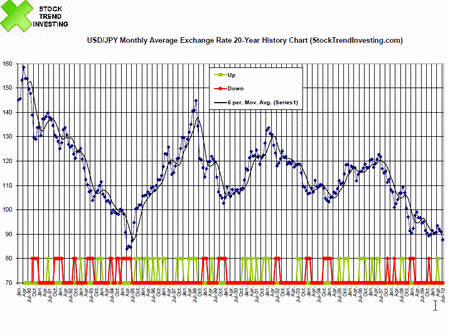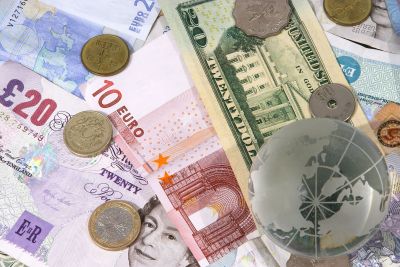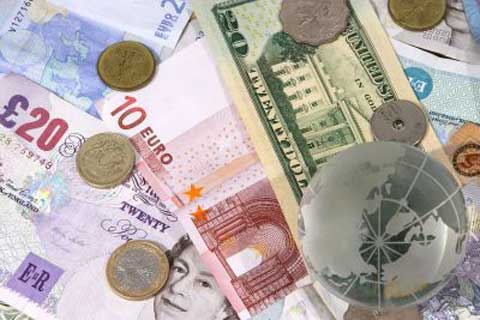currency
This is How You Protect Your Cash Savings from this Currency Crisis
Submitted by Van Beek on September 15, 2011 - 15:59International diversification to protect your savings against a currency crisis.
Between September the previous year and June this year, Pedro had lost 74% of his savings measured in dollars. He was holding the savings of his family in cash. Stock markets were falling all over the world. Inflation was shooting up and live was becoming much more expensive every day. It was crisis.
What is ahead for the US Dollar given the large Current Account Deficit
Submitted by Van Beek on September 30, 2010 - 06:35The Current Account deficit for the US is at this moment $123 billion per quarter and 3.3% of GDP. This is less than the 6% in 2006 but still at a level that most economists consider to be unsustainable in the long term. The decline is probably caused by the economic situation and could be temporary. So, what does this mean and what is ahead for the US?
In this article we focus on what the consequences could be for the US given its large Current Account deficit and the factors that are driving this deficit.

Four Possible Drivers for Large Current Account Deficits like in the US
Submitted by Van Beek on September 29, 2010 - 08:19Large Current Account deficits are rarely a positive symptom. They reflect often an underlying economic situation that can be unsustainable. The US has a large Current Account deficit. What are the possible drivers for such a large deficit?
This article focuses on the economic symptoms or situations that could lead to a large Current Account deficit.

How a Current Account Surplus can lead to a Weak Chinese Currency
Submitted by Van Beek on September 27, 2010 - 06:57Central Banks have few options to manage the currency in case of a Current Account deficit. Such a deficit is financed by a Capital Account Surplus. This can be done via higher incoming investments or lower foreign currency reserves. In case of Current Account surplus, the Central Bank will have the option to keep its currency artificial low in the eyes of the rest of the world. How does that work?
This article focuses on the impact of a deficit or surplus of the Current Account on the Capital Account and the domestic currency.

The Current Account and how Money Flows
Submitted by Van Beek on September 21, 2010 - 15:29Do you understand how Public Deficits, Foreign Debts, trends in Currency Exchange Rates and Current Account Deficits impact the investment opportunities in the different markets around the world? To do so, a sound understanding is required of each of these economic concepts and how they interact with each other.

This article is a first in a series of five that explains the economic concepts of Current Account, Capital Account and Reserve Account and how they relate with foreign debts and public deficits. If you are interested to get an understanding of how the economy works, how money flows between nations and its impact on currency trends and the economic well-being of nations, please read on.
Why is the Japanese Yen so Strong
Submitted by Van Beek on September 9, 2010 - 15:04The question on why the Japanese Yen is now so strong against the U.S. Dollar is asked repeatedly the last few weeks, months and years.
The Yen reached recently a 15-year high against the Dollar. Was this in line with expectations? What is happening and what is causing this? Here are the analysis and conclusions on why the Yen is so strong.
USD/JPY 20-Year Exchange Rate Trend and History Chart - July 2010
Submitted by Van Beek on August 10, 2010 - 02:55This USD/JPY exchange rate and trend chart shows a 20 year history. The US Dollar - Japanese Yen exchange rate is a lot in the news recently since a Dollar buys less and less Yen's. This is the historic perspective. The trend just continues. Click now here to see the historical trend investing performance and what level of results you can expect.

EUR/USD Exchange Rate Trend and History Chart: 20 Years
Submitted by Van Beek on June 9, 2010 - 07:26This chart for the EUR/USD exchange rate and trend shows a 20 year history. Since the Euro exists only for about 10 years we had to make some calculations. You will see later below. 20 years provides a unique historic perspective.
Trends in currency exchange rates are important for investors who invest outside their home currency zone. A foreign stock market index could move up but the currency for that market could devalue compared to your home currency. In that case, your gains measured in your home currency would reduce or could even turn negative.
Trading currencies or how to deal with currency fluctuations
Submitted by Van Beek on March 17, 2010 - 02:51There is a recent trend that non-professional investors step into the currency trading. The major shifts that the US dollar has made versus the Euro during the last year are probably the reasons for this. Why should you be very, very careful before starting to trade in currencies and what can be the impact of currency fluctuations on investors in stocks and funds.
The exchange rate between currencies is developing 24 hours per day. This exchange rate is the price you need to pay in one currency for another. For example, at the time of writing, one needs to pay 1.37 US dollar for every 1 Euro.




